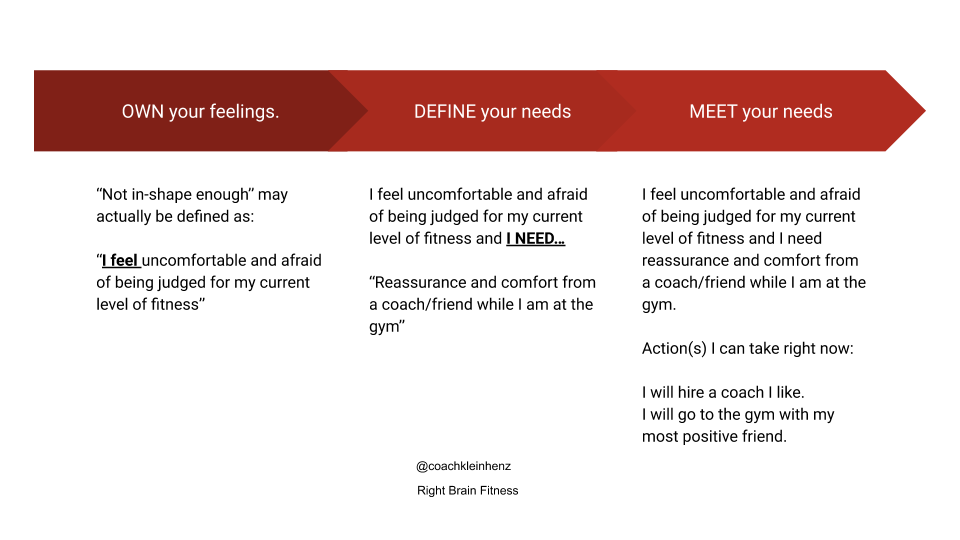“Whether you think you can or you think you can’t, you’re right” – Henry Ford
A limiting belief is something that you believe to be true that is limiting you in some way. Like a band of trolls that dwells under a bridge, your limiting beliefs subconsciously await their spontaneous moments to spring up and challenge your confidence. Surprisingly, many people do not recognize their limiting beliefs.
So let’s start with a few fitness-related examples you may recognize:
- “I’m not in-shape enough to go to the gym.”
- “I already messed up my diet, so why try. I’m never going to reach my goals.”
- “I’m not thin enough for yoga.”
- “That type of fitness works for people with XYZ but not for me.”
- Telling others “You’re so strong/powerful/fast!” in a comparison to yourself being framed as not strong/powerful/fast.
These beliefs color your thoughts the way a filter colors a camera lens. Often, you switch filters without realizing it. Your subconscious uses limiting beliefs to protect you from negative emotions or reactions like shame, fear, or feelings of inadequacy based on your past experiences.
Example:
Imagine you are six years old and playing a game with your cousin. Even though you are a female, you are bigger and stronger than him at this age. When you beat him at the game, he gets very angry and wants to fight. You run to your parents for protection and comfort. Instead of providing for your needs, you’re told “Girls shouldn’t be stronger than boys”. You are confused and upset. Your comfort and sense of security is on the brink and your six year old heart switches belief from “His anger is scary and not okay!” to “His anger is justified and it was my fault” in order to reconcile your parents’ response.
Hopefully, you can see that years down the line this can invariably affect everything from the girl’s competitiveness to her expectations in a romantic relationship. Similar situations occur in all genders when needs aren’t met. The BEST part of this is that you can CREATE a new neural pathway anytime you revisit those experiences through memory.
When we bring awareness to our personal stories and the beliefs we are holding we can catapult ourselves into a new way of thinking and healing. Enter, your freedom mindset.
So let’s dig in.
How often do you sit with your feelings? How often do you express your needs?
How often do you use vague, ambiguous language rather than speaking with clarity out of your truth?
How uncomfortable does it feel right now to ask yourself these questions?
If your limiting beliefs are filters on a camera, your freedom mindset is remembering that you’re the photographer.
You have the power to examine the moments of your own life, analyze how you like the filter that’s currently in place, and decide how you’d rather life look.
You can do this through a process I will outline below using one of the limiting beliefs mentioned before:
“I’m not in-shape enough to go to the gym”

While it seems simple enough to brush off, I URGE you to try this out.
Expressing feelings and needs with clarity and precision is incredibly difficult even if it seems simple. Your feelings should be FEELING rather than diagnosing.
In step one, notice I used the examples “uncomfortable and afraid”. These words are personal feelings. They involve no one else “acting” upon you. Whereas if I said “I feel intimidated”, I am still putting the blame on someone else rather than speaking of my true feelings. I am allowing a “…by” to follow implicitly. Talk about INEFFECTIVE.
You cannot determine YOUR needs when your feelings are based upon another person’s feelings.
Name your feelings. Then, name your needs.
Naming your needs means specifically stating WHAT will positively impact your feelings. In this case, “uncomfortable” is met with “comfort” and “afraid” is met with “reassurance”.
Name your feelings, name your needs. Then, MEET your needs.
Often, this is the easy part once your feelings and needs are stated clearly. What actions can YOU take to fulfill your needs?
In this case, because the need is for “reassurance and comfort from a coach/friend”, it can be quickly established that you need to hire a coach or find a friend who will be at the gym with you.
Again, this is a small example of a limiting belief and how you can identify and change it based on your feelings and needs. While you may become more aware of limiting beliefs in everyday life, remember that YOU have the power to change your own neural pathways and develop new thought processes.
This isn’t a dichotomy. It’s an ebb and flow that is a reminder that you are human. So, whether you think you can or think you can’t, you can change that.
